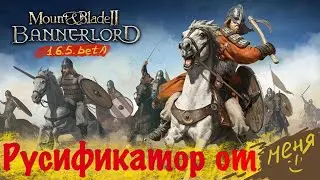Щит Гоплон Древняя Греция Гоплит Shorts
Щит Гоплон Древняя Греция Гоплит
#гоплон #гоплит #древняягреция
В переводе с древнегреческого "Гоплон" - переводится как «оружие», хотя в самой Элладе использовалось другое название, указывающее на форму, - аспис. Однако именно от гоплона произошел и термин, обозначающий тяжеловооруженного пехотинца - гоплита.
Самые ранние изображения воинов с такими щитами встречаются на керамике VIII века до н. э. Размер гоплона - от 80 см до 1 м, так что он прикрывал бойца от шеи до колена. Основу щита составляли плотно сбитые планки толщиной 0,5 см, обтягивавшиеся с внутренней стороны кожей, а с внешней покрытые бронзой или железом.
На внутренней стороне в центре крепилась бронзовая рукоять (порпакс), под которую рука просовывалась до локтя, а кистью боец сжимал вторую, кожаную рукоять, находившуюся ближе к краю. При другом варианте конструкции через кольца по пери¬метру щита крепился шнур, который давал возможность перебрасывать щит за спину. Вес гоплона составлял от б до 10 кг. Иногда к нижней кромке подвешивалась тканевая защита от стрел и дротиков.
Выстроившись плечом к плечу, выставив вперед копья и закрывшись щитами, греческие воины образовывали в бою фалангу. Выбивание одного бойца существенно отражалось на стойкости всей шеренги. Потеря щита в случае бегства считалась величайшим позором, поскольку означала отказ воина от дальнейшего участия в битве.
Раненых и убитых обычно выносили из схватки на гоплонах, что и привело к появлению поговорки «Со щитом или на щите» (вернуться из боя победителем или мертвым).
Hoplon Shield Ancient Greece Hoplites
Translated from ancient Greek, it translates as "weapon", although in Hellas itself another name was used indicating the shape - aspis. However, it was from hoplon that the term for a heavily armed infantryman - hoplite also originated.
The earliest images of warriors with such shields are found on ceramics of the VIII century BC. The size of the hoplon is from 80 cm to 1 m, so that it covered the fighter from neck to knee. The shield was based on tightly knotted 0.5 cm thick slats, covered with leather on the inside, and covered with bronze or iron on the outside.
On the inner side, a bronze handle (porpax) was attached in the center, under which the arm was pushed up to the elbow, and with the hand the fighter squeezed the second, leather handle, which was closer to the edge. In another version of the design, a cord was attached through the rings around the perimeter of the shield, which made it possible to throw the shield behind the back. The weight of the hoplon ranged from b to 10 kg. Sometimes fabric protection against arrows and darts was suspended from the lower edge.
Lined up shoulder to shoulder, spears thrust forward and shields covered, the Greek warriors formed a phalanx in battle. Knocking out one fighter significantly affected the resilience of the entire line. The loss of the shield in case of flight was considered the greatest shame, since it meant the refusal of the warrior from further participation in the battle.
The wounded and killed were usually carried out of the fight on hoplons, which led to the saying "With a shield or on a shield" (to return from the battle victorious or dead).
Bouclier Hoplon Grèce Antique Hoplites
Traduit du grec ancien, il se traduit par «arme», bien que dans la Grèce elle - même, un autre nom indiquant la forme ait été utilisé-aspis. Cependant, c'est du hoplon que le terme désignant le fantassin Hoplite lourdement armé est venu.
Les premières images de guerriers avec de tels boucliers se trouvent sur la céramique du VIIIe siècle avant JC.E. la taille du hoplon est de 80 cm à 1 m, de sorte qu'il couvrait le combattant du cou au genou. La base du bouclier était des lattes étroitement abattues d'une épaisseur de 0,5 cm, serrées à l'intérieur de la peau, et à l'extérieur recouvertes de bronze ou de fer.
À l'intérieur, au centre, une poignée en bronze (porpax) était fixée, sous laquelle la main se glissait jusqu'au coude, et avec une brosse, le combattant pressait la deuxième poignée en cuir, située plus près du bord. Dans une autre variante de la conception, un cordon était fixé à travers les anneaux le long du périmètre du bouclier, ce qui permettait de jeter le bouclier derrière le dos. Le poids du hoplon allait de B à 10 kg. Parfois, une protection en tissu contre les flèches et les fléchettes était suspendue au bord inférieur.



















